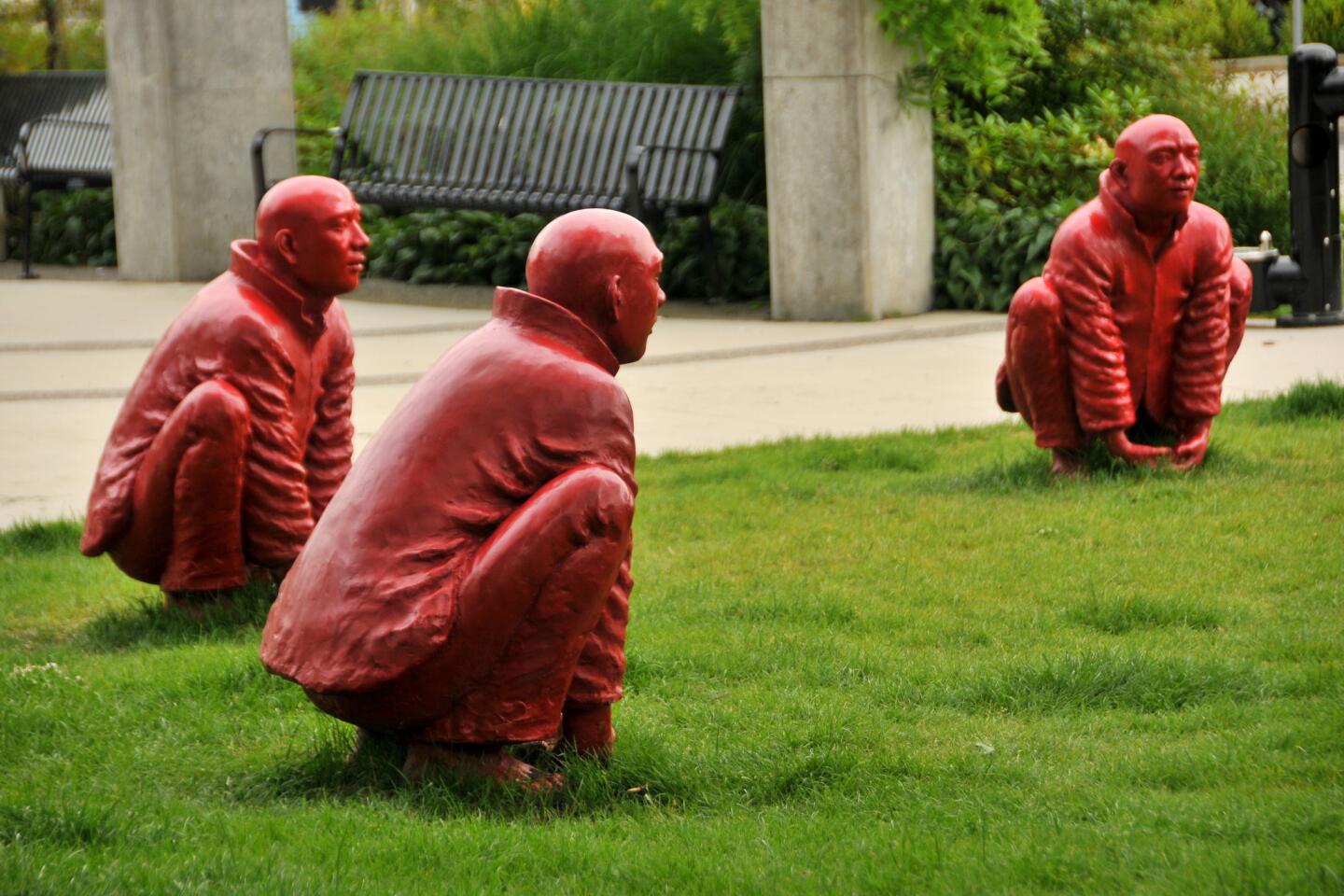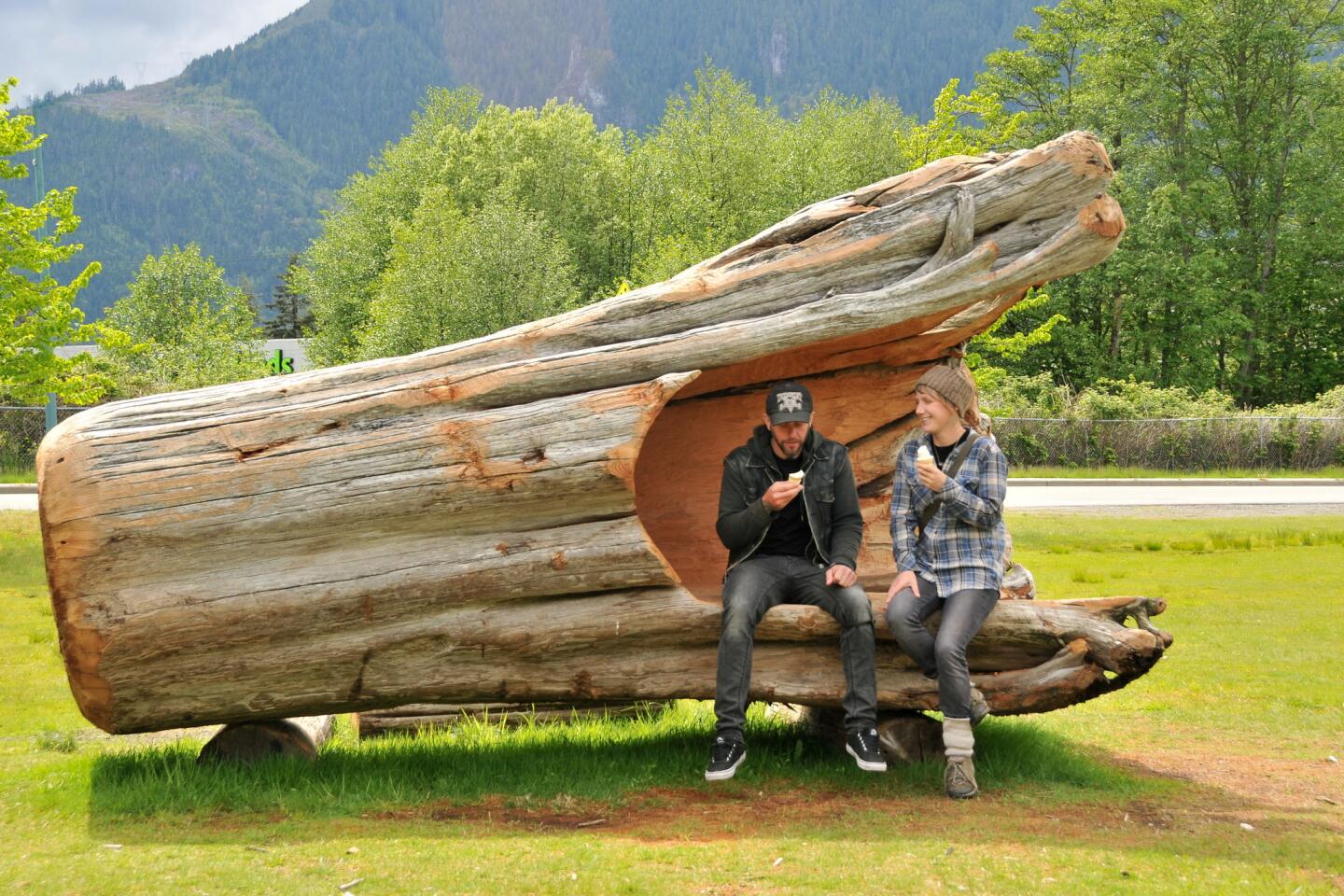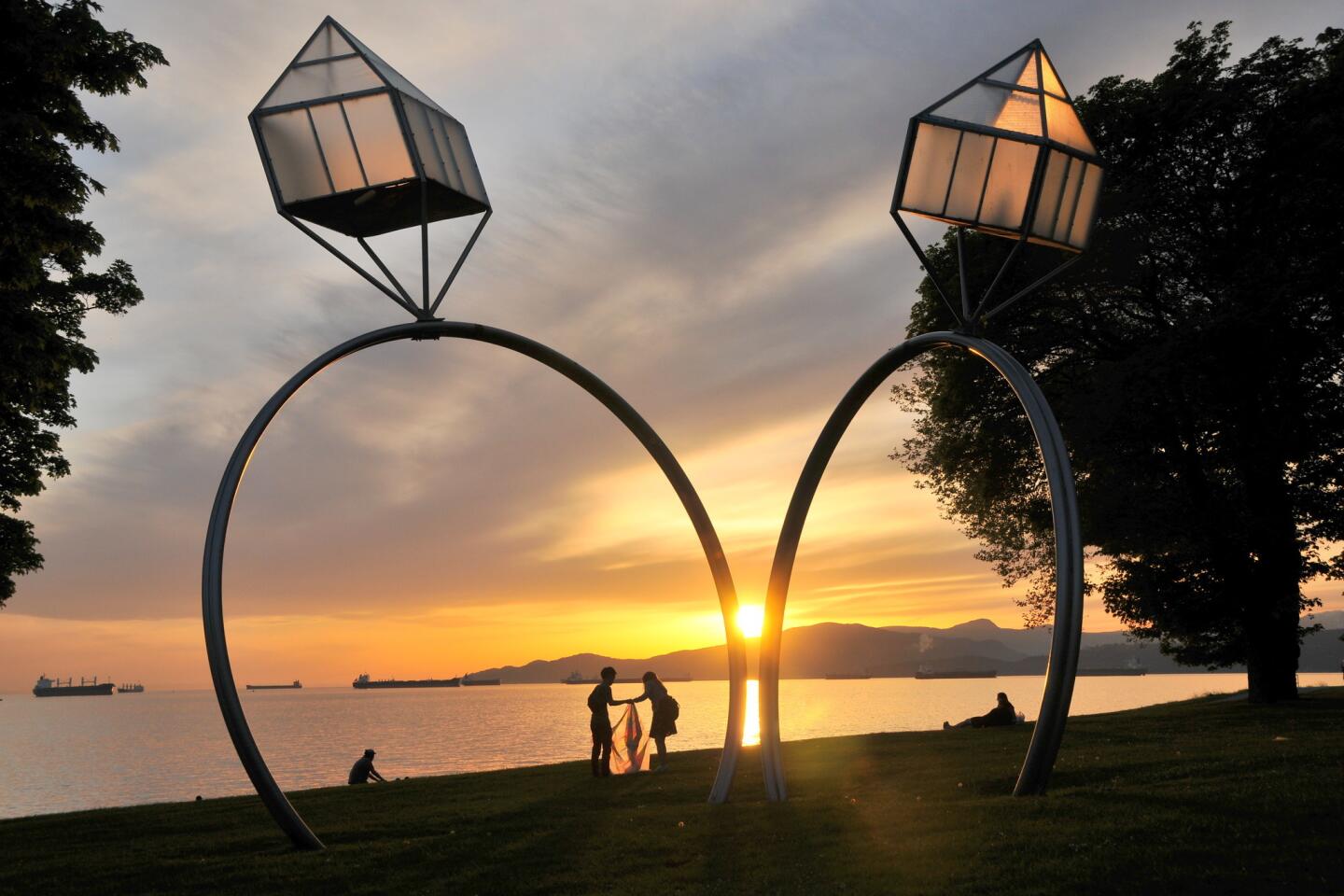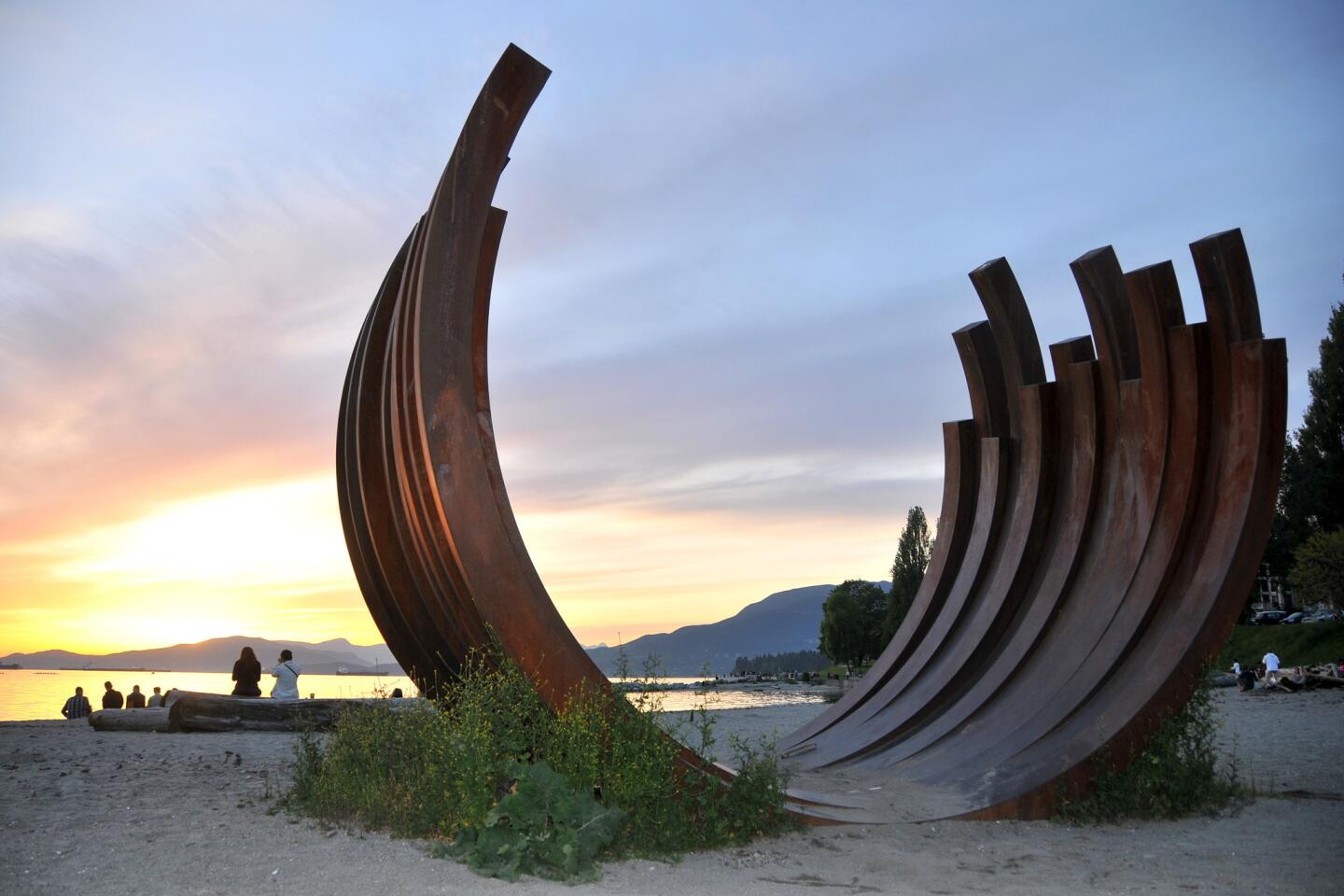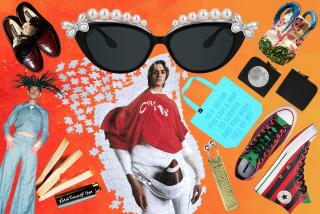Canada: Biennale to transform Vancouver into an outdoor art gallery
Giant jellybeans, circles of bright red squatting men and a tree sprouting psychedelic Day-Glo flowers are taking up residence in Vancouver’s public spaces. The city is ramping up for its third International Sculpture Biennale, transforming itself into an open-air contemporary art museum for the next two years.
Art biennales -- meaning “lasting two years” -- are held around the world, the best known being the 120-year-old Venice Biennale in Italy, but Vancouver’s is unique. Instead of works tucked inside galleries that charge admission fees, the art is outside, free and open to everyone 24 hours a day until July 31, 2016.
The 2014-2016 theme is Open Borders/Crossroads and features 92 visiting artists and 16 curators from around the world.
There will also be new media, cinema, performances, exhibitions and workshops.
But the soul of the celebration is the outdoor gallery of 20 large-scale museum-quality sculptures and art displays popping up in parks and open spaces throughout downtown neighborhoods: Ten more will be installed in the scenic nearby suburbs of New Westminster and North Vancouver, and even Squamish, 40 minutes north of Vancouver on the Sea to Sky Highway.
“Vancouver is an outdoor city 365 days a year,” says Barrie Mowatt, the Biennale’s founder and president who brings in $20 million worth of projects with a $3.5-million nonprofit budget, “so it was logical to have an open-air museum.”
Most of the artwork stays in place for only two years, though a few pieces remain permanent installations.
Arrive in the city on a VIA Rail train or Greyhound bus and encounter Canadian artist Ivan Eyre’s bronze half-man/half-bird. Stroll through Chinatown into Chinese artist Bing Bu’s “Green Vandalism,” an 8-foot-tall forest of 500 bamboo-like sculptures awaiting visitors’ embellishment with a green felt pen.
Follow the Seawall to Sunset Beach and Spanish Banks to watch Cuban artist Kcho creating dinghy and rowboat-themed sculptures on site. No admission, no closing times.
Info: Vancouver International Sculpture Biennale
Meet the makers
Headlining the diverse parade of international talent for the 2014-2016 Biennale is Chinese activist and artist Ai Weiwei, artistic consultant on the 2008 Beijing Olympics “Bird’s Nest” National Stadium.
His Vancouver project is hush-hush, but the sections arriving throughout summer will be assembled and unveiled in late October on the waterfront near Vancouver’s Convention Centre.
British artist Andy Goldsworthy’s environmentally themed work is a First Nation’s collaboration potentially slated for Stanley Park.
Brazilian artist and photographer Vik Muniz was also inspired by local aboriginal culture when he arrived in Squamish and created a huge “land mosaic” of a wolf that can be viewed from atop a tower.
Also from Brazil -- and also exhibiting in Squamish -- sculptor Hugo Franca and his team were busy in early spring cutting, hollowing and carving huge local logs and stumps into 12 dramatic sculpture/public furniture artworks meant to be sat, leaned and lounged upon. (Several are also exhibited on Vancouver’s Spanish Banks Beach.)
American artist Jonathan Borofsky, who brought the “Ballerina Clown” to Venice Beach and the “Hammering Man” to Seattle, has left his mark with a 24-foot-tall installation called “Human Structures” near the False Creek waterfront. This celebration of cultural diversity is four tiers of multicolored Lego-like figures holding hands with the city skyline as a backdrop.
One of the most intriguing creations is a massive 360-degree, 75-foot-tall mural being painted this summer on eight Granville Island cement silos by Sao Paolo-born identical twins Otavio and Gustavo Pandolfo. Drawing inspiration from hip-hop style as well as traditional Brazilian culture, they are graffiti artists known by as “Os Gemeos” -- the twins -- and they have exhibited in London’s Tate and L.A.’s Museum of Contemporary Art.
The Lower Mainland-wide outdoor gallery is diverse: Australian Konstantin Dimopoulos is re-creating his Blue Trees that brightened London, in the suburb of New Westminster.
South Korean artist Choi Jeong Hwa is behind the 18-foot, multicolored metal and plastic tree bursting with flowers among real trees on the English Bay waterfront.
And everybody loves giant jelly beans in Canadian artist Cosimo Cavallaro’s “Love Your Bean” installation.
Touring the sculptures
With a 16-mile long waterfront Seawall bike path encircling downtown, and a temperate climate in a stunning natural setting, it’s no wonder Vancouver is bike-crazy. Cycling is also a big part of every Biennale, which even has a fleet of donated pink and yellow bikes for loan.
On Sept. 27 and 28, as part of Canada’s three-day Culture Days celebration, anyone can take part in BIKEnnales -- family-friendly bike rides rolling past sculpture sites in each of the host municipalities.
Download a map (posted on the Biennale website), grab a bike, head to one of the starting points and pedal to the installations where trained docents educate and answer questions. Some artists may even be present.
Or simply make the tour on your own at any time, checking out information plaques at each sculpture. A second round of BIKEnnales will take place in September 2015.
It’s also possible to book a private, guided cycling tour for a minimum of eight. Care to pedal with the energetic Biennale President Barrie Mowatt, a prominent local art dealer, collector and passionate cyclist? That will be $1,500 with all proceeds going to the nonprofit Biennale charity, box lunches included.
North Vancouver, rising up the flanks of the North Shore Mountains, is a new addition to the Biennale circuit. Access the sculptures there by hopping the 12-minute Seabus ferry from downtown across the harbor to Lonsdale Avenue, the main up-down boulevard lined with 20 installations and art sites including the Gordon Smith Gallery of Canadian Art.
Download the self-guided “Walk Down Lonsdale” tour or simply follow the Biennale banners to find such gems as Chinese artist Wang Shugang’s circle of red crouching men in “The Meeting,” and Polish artist Magdalena Abakanowicz’s eight headless “Walking Figures.”
At the bottom of Lonsdale, a waterfront shipyard building has being revamped into the Biennale International Pavilion hosting ongoing installations of Brazilian contemporary art until November. Meet the Brazilian artists in residence and take a free guided tour (reservations required).
More to Read
Sign up for The Wild
We’ll help you find the best places to hike, bike and run, as well as the perfect silent spots for meditation and yoga.
You may occasionally receive promotional content from the Los Angeles Times.
